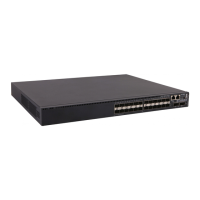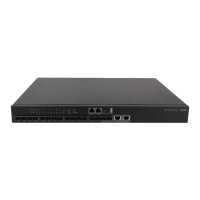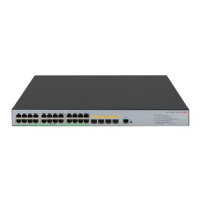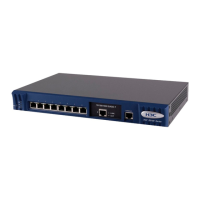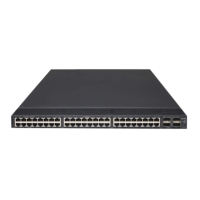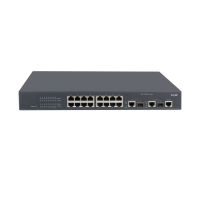5
Setting Details
PVID on the IPP PVID on the IPP.
Spanning tree state
• Global spanning tree state.
• VLAN-specific spanning tree state.
Spanning tree mode Spanning tree mode, including STP, RSTP, PVST, and MSTP.
MST region settings
• MST region name.
• MST region revision level.
• VLAN-to-MSTI mappings.
Table 2 DR interface type 1 configuration
Setting Details
Aggregation mode Aggregation mode, including static and dynamic.
Spanning tree state Interface-specific spanning tree state.
Link type Interface link type, including access, hybrid, and trunk.
PVID Interface PVID.
Type 2 configuration
Type 2 configuration consistency check is performed both globally and on DR interfaces. Table 3
and Table 4 show setting
s that type 2 configuration contains.
Table 3 Global type 2 configuration
Setting Details
VLAN interfaces Up VLAN interfaces of which the VLANs contain the IPP.
Passing tagged VLANs
or passing PVID
VLANs of which the IPP forwards tagged traffic or PVID of which the IPP forwards
traffic.
Table 4 DR interface type 2 configuration
Setting Details
Passing tagged VLANs VLANs of which a DR interface forwards tagged traffic.
Passing untagged
VLANs
VLANs of which a DR interface forwards untagged traffic.
DRNI failure handling mechanisms
DR interface failure handling mechanism
When the DR interface of one DR member device fails, the DR system forwards traffic through the
other DR member device.
As shown in Figure 3,
Device A and Device B form a DR system, to which Device C is attached
through a multichassis aggregation. If traffic to Device C arrives at Device B after the DR interface
connected Device B to Device C has failed, the DR system forwards the traffic as follows:
1. Device B sends the traffic to Device A over the IPL.
2. Device A forwards the downlink traffic received from the IPL to Device C.
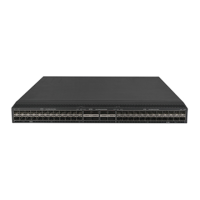
